[mashshare]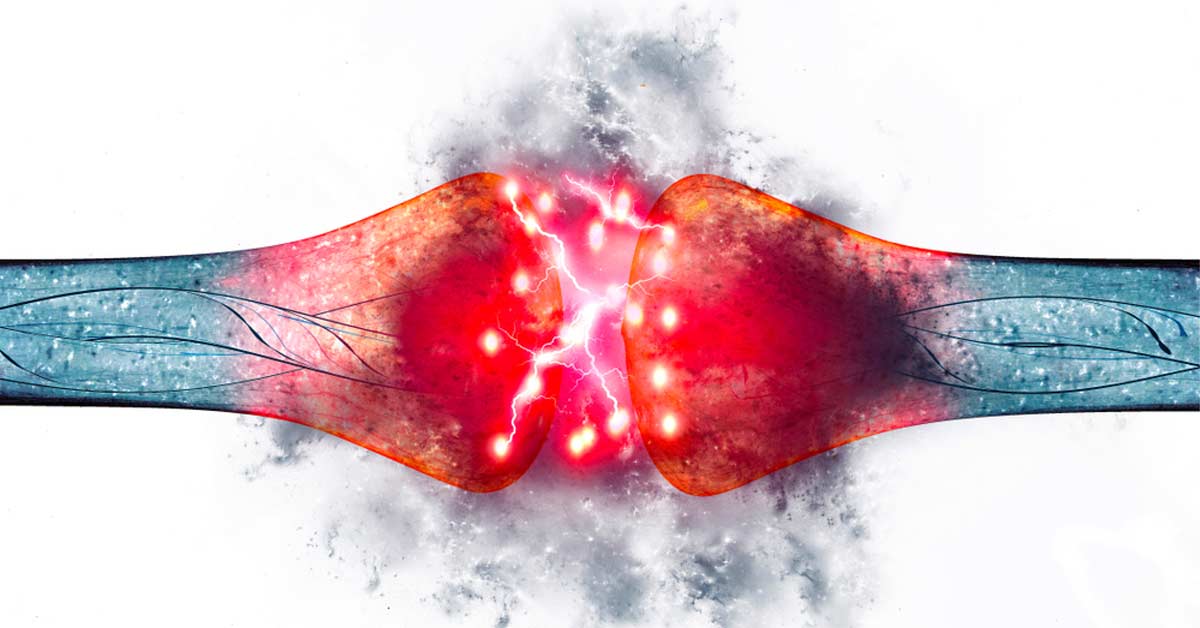
As a practitioner who has used electrical muscle stimulation for 25 years for performance training and return-to-play applications, it continues to amaze me the number of coaches, athletes, and even physical therapists who are unaware of the wide range of uses for this particular type of technology. I have even spoken to a number of representatives from companies that sell electrical stimulation products in the past few years, and I am equally surprised at how little they know about their own product’s potential, which puts them at a significant disadvantage with their sales and marketing efforts. At present, Dr. Ho looks like a marketing genius when it comes to consumer-based electrotherapy products. However, Dr. Ho represents the tip of the iceberg when it comes to the wealth of benefits sitting just below the waterline.
The number of coaches, athletes, and even physical therapists who are unaware of the wide range of uses for electrical muscle stimulation technology continues to amaze me, says @DerekMHansen #EMS. Share on XAlthough electrical stimulation has been used extensively for muscular contraction purposes since the 1960s, there has been relatively slow innovation and growth in the technology, and in any associated electro-physiological protocols, in the last 50 years. Pockets of innovative use have developed throughout the modern age, but this has not translated to widespread usage despite the fact that—in the right hands—this technology can make a big difference. A handful of experts toil away with the technology and achieve significant results with athletes and the general population, but many of their successes go unnoticed. Additionally, scientific research lags far behind, as few researchers have the ability to think outside the box with the technology and move into new areas of development.
Thus, I continue to write these articles and speak on the subject with the hope that the rest of the world catches up. Much like the effort to convince people that they need more sleep—even though the benefits are obvious, significant, and readily achievable—we can only present the information and let the masses make their choice.
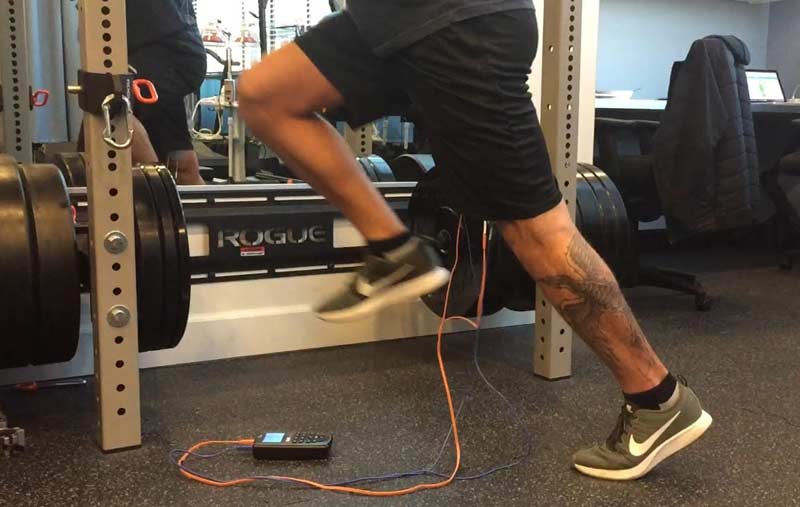
Provided below are my key reasons for promoting electrical stimulation as a “front-and-center” feature of my return-to-play process. As you will discover during the course of this article, it is not the sole means of effecting positive change, but rather a tool that facilitates other rehabilitation and exercise objectives, almost distracting individuals from the task at hand in order to encourage enhanced focus and biomechanical compliance. I would also argue heavily in favor of the benefits of electrical stimulation as a “technological placebo” when used in the right settings and contexts. In my opinion, what you do with electrical stimulation is far more important than what it does for you, especially if timely, sustainable results are what you desire.

Encouraging Movement and Adding Load
No one will disagree with the concept that movement encourages healing. The primary objective of all rehabilitation professionals or recovery specialists should be to encourage movement in various forms, durations, and intensities. Common sense tells us that movement—whether for sustenance, general utility, or survival—leads to positive adaptations, growth, and, at the very least, maintenance of homeostasis. Movement with variable loads can be even more beneficial, particularly if the loading is achieved progressively.
Unfortunately, electrical stimulation fell into the domain of physical therapists, and lounging on a plinth with electrode pads wrapped or taped to the skin seemed to be the treatment of choice. Let me also point out that laying patients down on tables and hooking them up to modalities also makes for a more profitable physical therapy practice. This setup is often accompanied by the recommendation to set the intensity to a “comfortable” level while you lie back and relax. Sadly, the objectives of sustenance, survival, and function are not even in the conversation.
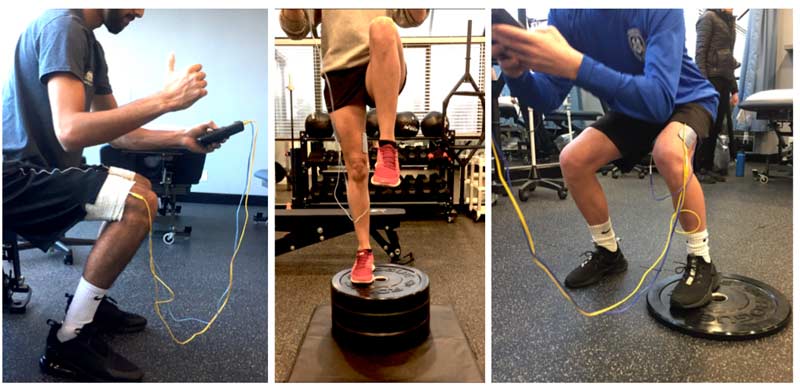
All of my return-to-play clients receive electrical stimulation while moving. Nobody is permitted to sit still, let alone lie down and fall asleep. Individuals are encouraged to—at the very least—stand for the beginning of protocols to set an ambitious working intensity for current stimulation. “Comfort” is a taboo word. The goal is to push into zones of discomfort by taking the individual through ranges of motion that were not previously attainable, as well as improve overall strength through these new ranges. In some cases, standing protocols are performed in the initial part of the session to enhance recruitment, and then quickly followed up with voluntary drills that incorporate coordination, strength, power, and rate of force development.
In postsurgical cases, such as in the rehabilitation of a repaired anterior cruciate ligament, movements that involve flexion and extension of the knee are facilitated by the use of electrical stimulation, whether it involves recruiting the quadriceps during extension movements or stimulating the hamstrings to lengthen or shorten as appropriate. These movements can be acyclical in nature when using the electrical stimulation—as in a box step-up—but then followed by a cyclical motion without the stimulation, as you would with a marching or skipping drill. The intent is to create a pathway and a pattern that can easily be followed with voluntary work.

Employing Disruptive Methods
Even though electrical stimulation has been used in sport training and physical rehabilitation for over 50 years, I still consider it a “disruptive” technology for many reasons. If we examine the concept of “disruptive” technology, we find that these are innovations that significantly alter the way that businesses and industries operate and, in many cases, often create entirely new markets. While the electro-stimulation field is not changing the way we do business, I believe it is disruptive in the way it interacts with the body and nervous system. Locally and systemically, peripherally and centrally, electrical stimulation has the ability to disrupt existing patterns and pathways and enable you to develop new ones. This ability is often referred to as facilitating neuroplasticity.
The addition of “noise” into a system for the purpose of optimizing or improving the overall function of that system is referred to as “stochastic resonance.” I believe electrical stimulation employs the stochastic resonance model for optimization of movement and function on two levels. In cases where pain or edema is present in a region of the body, electrical stimulation introduces noise into a system, either to cancel out the pain signals or to hasten the movement of fluid out of a region, so that appropriate function can take place. Inhibition can be overridden in these cases and function restored immediately.
Of course, sustainability of function can only be attained through repetition and retention of the positive patterns. Often, the natural responses of pain and edema formation subside as the brain recognizes that a positive outcome has been arrived at and the body returns to “business as usual.” Once again, disruption can be positive and move the client forward beyond a stagnant homeostasis, with the right amount of noise introduction at the right time and correct frequency.
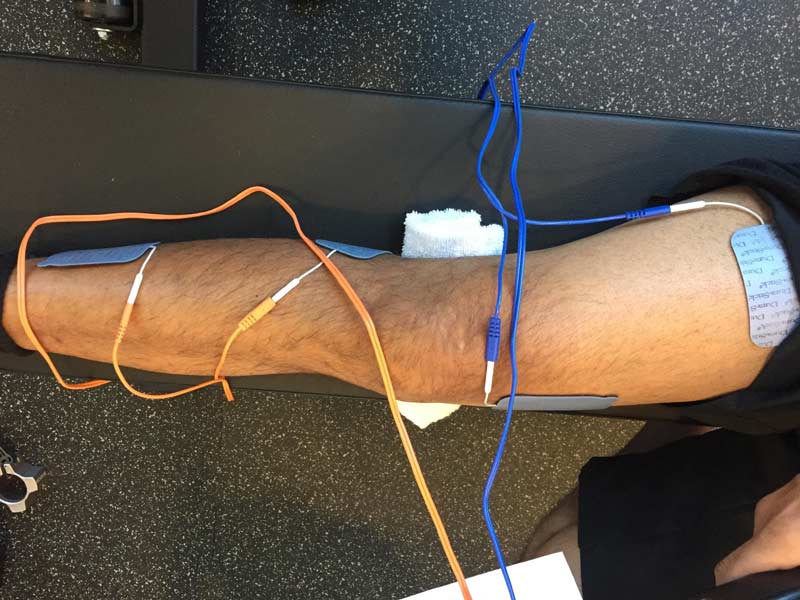
In an alternative scenario, electrical stimulation can improve function by introducing “noise” into a system to enhance muscle recruitment for strength production and overall muscle hypertrophy. A muscle that has experienced disuse or inhibition from injury can easily be brought back online to contribute to supporting the skeleton or moving the body. As mentioned previously, when combined with movement, it becomes much easier to “disrupt” older, less-productive patterns.
I am a big believer that the brain and body yearn for proper function and optimal performance, as we have been hardwired through evolution as such for the purpose of survival. Technological innovation has made us much less biologically adaptable, leading to poor habits and patterns. Through electrical stimulation, you can reboot your system to disrupt these poor patterns and get your clients and athletes back on the true path.

Testing the Preparedness and Readiness of the Nervous System
The trauma of injury and the procedures that often accompany injury—including surgeries—can create significant disruptions to the central nervous system and the way the brain interacts with the body. Similar to safety sensors in a motor vehicle, the nervous system will inhibit normal locomotive abilities if it perceives that something is damaged or malfunctioning. Muscle systems can be shut down and reflexes inhibited to protect the organism from creating further damage. As we know, however, these “shutdowns” can inflict further harm by placing the load on other structures that were not meant to handle them, and also create overuse conditions that lead to chronic injury.
Through my experience with electrical stimulation, I have learned to use the device as a diagnostic tool. Anyone who has used electrical muscle stimulation regularly knows that injured or fatigued muscles require significantly more current to stimulate a contraction than a healthy, recovered muscle. This can be used to assess both the preparedness and readiness of a client.
In situations where I am working with a return-to-play case, we begin the session with electrical stimulation on an affected muscle group to assess their general preparedness and where we need to improve. In the case of knee injuries, a basic quadriceps placement can give you all the information you need on where the client is in their rehabilitation process. Where pain and edema are present in a knee joint, it is not out of the ordinary to see an intensity difference of 50-100% in the amount of current required to create a healthy contraction in the vastus medialis of an injured knee. In a more recent case where I was dealing with a post-surgical knee replacement client, we witnessed differences in excess of 200% in current intensity from the nonsurgical to surgical leg.
The fantastic part of this story is that as the treatment progresses—including electrical stimulation work, superimposed stimulation work, and voluntary work—the electrical stimulation device will communicate that these current intensity differences begin to narrow and match up with your client’s feedback in terms of function, pain reduction, and edema elimination.
I use electrical stimulation on healthy athletes to diagnose their overall readiness prior to an intensity training session, says @DerekMHansen. Share on XBecause I have had so much success with electrical stimulation diagnostics with return-to-play clients, I now use electrical stimulation on healthy athletes at the beginning of sessions to diagnose their overall readiness prior to an intensity training session. The session is brief but enlightening. We choose a muscle group that will be involved in the session, or that may have given this athlete problems in the past, and we turn up the current intensity to get a baseline of information that we can use to guide our session. Because we do this consistently, we have a historical database of how this athlete has presented with the electrical stimulation evaluation and how training and performances have progressed over time. It is a fabulous way to evaluate readiness and gain greater confidence in your approach moving forward from day to day and week to week.
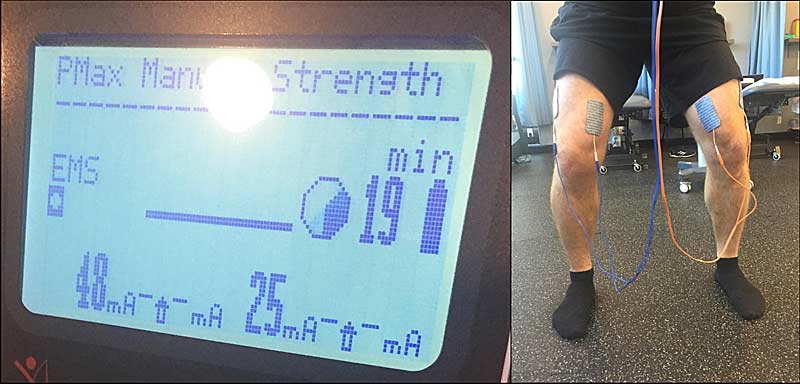

Mechanical and Neurological Work During Periods of Inactivity
In situations where movement is not immediately indicated, such as in the early stages following injury or a surgical procedure, electrical stimulation is exceptionally handy for managing edema formation and muscle atrophy. While I previously mentioned that the majority of my work with electrical stimulation employs movement and loading protocols, there are cases where significant exercise is contraindicated. In these cases, electrical stimulation can be used to facilitate neurological responses as well as subtle mechanical work in the immediate stages following injury or surgery.
In the case of a hamstring strain, I often use electrical stimulation to encourage circulation to the injured tissues to facilitate flushing and, ultimately, repair of the muscle. The stimulation pads are placed peripherally to the injury site to provide a generalized flow of blood to and from the area. The stimulation current is also helpful in managing the muscle tone of surrounding muscles that are often in a hypertonic state in order to restrict movement and shift the load to other structures and muscles. And even in a general manner, electrical stimulation can maintain the health and strength of surrounding muscle groups during the initial moments of inactivity following injury.
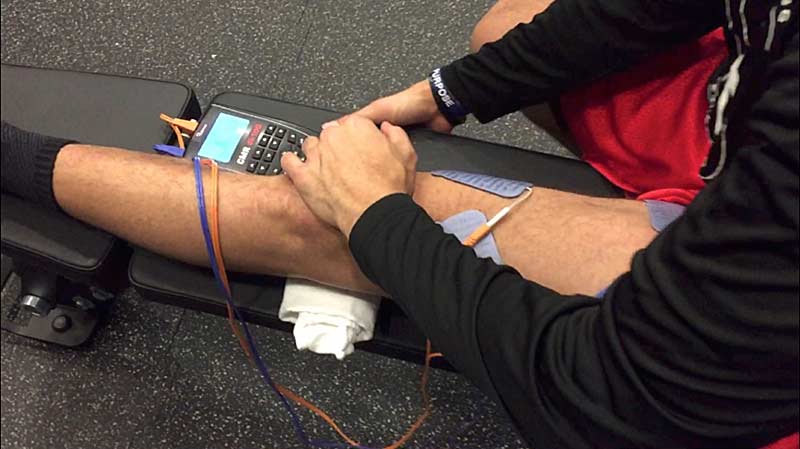
With major surgery such as an anterior cruciate ligament reconstruction, I commonly employ electrical stimulation immediately following the procedure to appropriately manage inflammatory conditions and maintain general muscle fitness at low levels of intensity. Depending on the procedure, I may focus on different muscle groups to achieve the desired outcome. If a central-third patellar graft has been used, I typically focus initially on hamstring and calf pad placements so as not to put tension on the patellar tendon via quadriceps stimulation. Ultimately, we will incorporate quadriceps stimulation after a given period of time to reduce atrophy and begin basic strength work. In the case of semitendinosus grafts, the focus of stimulation will be on the quadriceps for strength and circulatory purposes, but also because quadriceps stimulation can assist with hamstring relaxation and lengthening, which is often a problem following the trauma of tissue harvesting from the hamstrings.
When injury or trauma has been inflicted on an athlete, use of electrical stimulation to manage the negative effects of inactivity is a no-brainer. Ultimately, the goal is to return the athlete to movement and loading as soon as possible, with superimposed electrical stimulation providing the bridge to fully loaded voluntary work. Without electrical stimulation, I have found that timelines lengthen significantly, sometimes with athletes missing those windows of opportunity for increased range of motion, function, and general capacity.
It is important to remember that #EMS stimulates not only the body, but also more importantly, the brain,” says @DerekMHansen. Share on XIt is important to remember that we are stimulating not only the body, but also more importantly, the brain and how this central processing unit perceives the state of the greater organism. Any tools we can employ that improve function and durability, and also convey a message of health, wellness, and competence to the brain, will go a long way to achieving sustainable results for all clients and athletes.
Future Directions
From what I have written, you may think electrical muscle stimulation is a panacea for training and rehabilitation. However, this is where it gets difficult. You need to know how to use this tool and how to adapt your treatment and training approaches to maximize its effectiveness. Uninformed electrical stimulation is simply bad electrical stimulation, and a lack of results will follow. This is exactly why many of the studies using electrical stimulation have fallen short, even though many studies have seen promising results.
Electrical stimulation by itself is not as effective as electrical stimulation superimposed on exercise. More intense electrical stimulation currents are far more effective than “comfortable” intensity settings. I cannot emphasize enough how the timing, frequency, volume, and pad placement details are synergistically important to arriving at superior results. I even promote to practitioners the placebo effect of using electrical stimulation as a visible input to an athlete’s training or a client’s rehabilitation. In the world of smartphones and wearable technology, athletes are clearly more engaged when doing their exercise with a glowing electronic device in their hand that is attached to their muscles, gamifying the experience and giving them control over the ability to contract their muscles. This is the reality that goes way beyond the research.
Electrical stimulation by itself is not as effective as electrical stimulation superimposed on exercise, says @DerekMHansen #EMS. Share on XMy own experiences and successes in this realm have encouraged me to develop a set of courses around the use of this technology to share the benefits with other practitioners in the performance, fitness and wellness, and rehabilitation fields. These courses and workshops will be available to the public very soon. With the right information, you can make significant progress in the life of your athletes and clients in just a few sessions. I see this firsthand on a daily basis, and it has changed the way I work with people. If Bill Gates’ dream was to, “have a computer in every home,” my dream would be to have a high-quality electrical stimulation unit in every health, wellness, rehabilitation, and performance practitioner’s hands.
Since you’re here…
…we have a small favor to ask. More people are reading SimpliFaster than ever, and each week we bring you compelling content from coaches, sport scientists, and physiotherapists who are devoted to building better athletes. Please take a moment to share the articles on social media, engage the authors with questions and comments below, and link to articles when appropriate if you have a blog or participate on forums of related topics. — SF
[mashshare]




